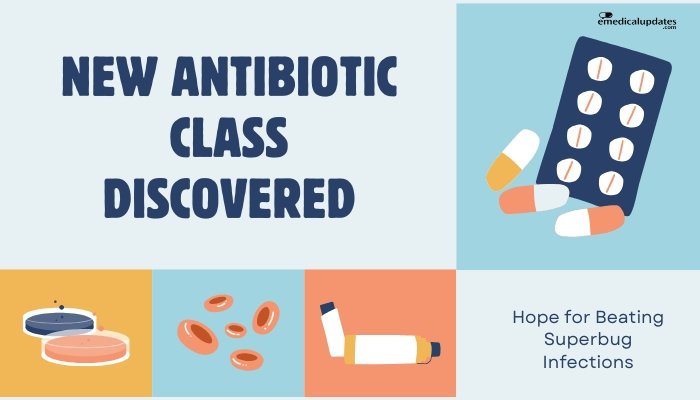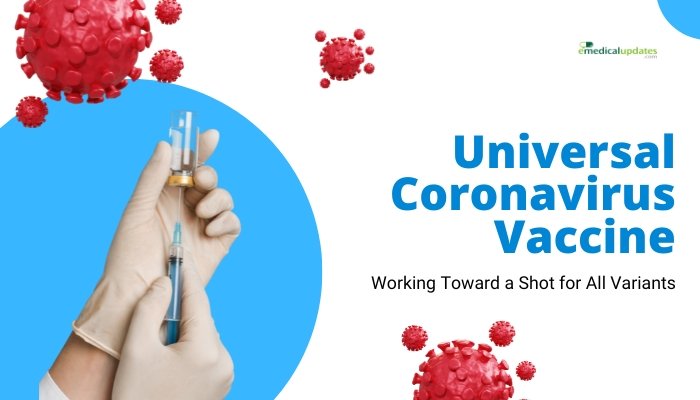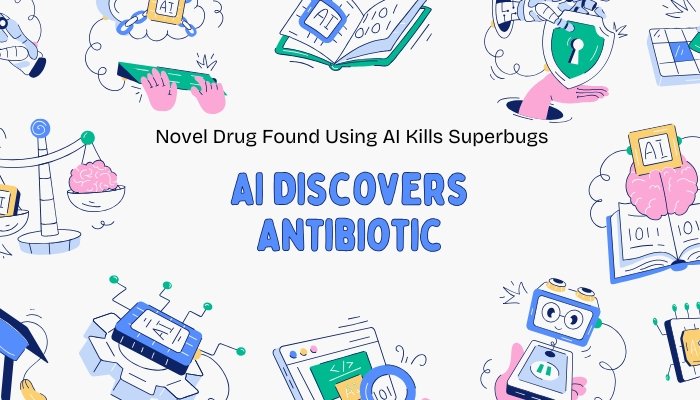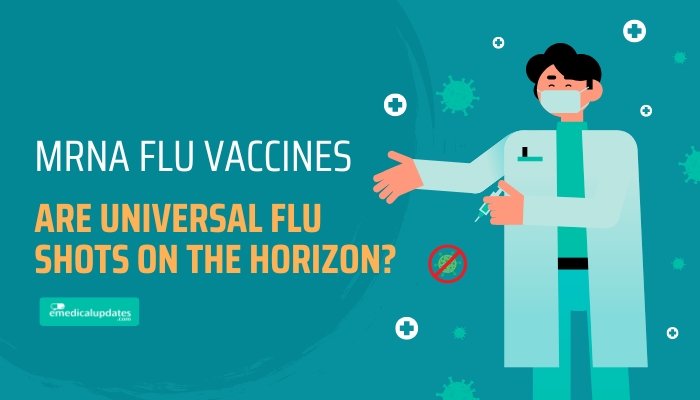Introduction
Drug-resistant bacteria, often called “superbugs,” have become a critical public health threat. Each year, more pathogens evolve resistance to existing antibiotics, forcing physicians to rely on dwindling options to treat serious infections.
With few novel antimicrobials reaching the market, many worry about a “post-antibiotic era” in which routine procedures and minor injuries could lead to life-threatening infections. Recently, however, scientists have identified a new class of antibiotics that shows potent activity against some of the most stubborn superbugs.
This breakthrough renews optimism that innovative drugs can once again outpace bacterial defenses.
This article explores the scope of antibiotic resistance, why discovering new drug classes is so difficult, and how this latest antibiotic family is poised to tackle multidrug-resistant organisms. We also examine what steps remain before these novel compounds can become widely available to clinicians.
The Antibiotic Resistance Crisis
Why Resistance Emerges
Bacteria multiply rapidly and adapt quickly to environmental pressures. When exposed to an antibiotic, a minority of organisms often harbor or develop genetic changes that allow them to survive. Over time, susceptible bacteria die, while resistant strains spread. Key drivers of resistance include:
- Overuse and Misuse of Antibiotics: Inappropriate prescriptions or incomplete courses.
- Agricultural Practices: Antibiotics used for livestock growth promotion or disease prevention.
- Global Travel: Resistant strains can move across continents.
Consequences for Public Health
Multidrug-resistant organisms complicate treatments for common infections—such as urinary tract infections, pneumonia, or bloodstream infections. Patients may face lengthier hospital stays, riskier treatments, or worse outcomes. Examples include:
- Methicillin-Resistant Staphylococcus aureus (MRSA)
- Carbapenem-Resistant Enterobacteriaceae (CRE)
- Vancomycin-Resistant Enterococci (VRE)
Some last-resort antibiotics, like colistin, can have significant side effects and are often less effective or only partially effective. A new antibiotic class targeting these superbugs would represent a vital lifeline for clinicians.
The Importance of New Classes
Fewer Drugs Entering the Market
While antibiotic resistance accelerates, the antibiotic development pipeline has slowed. Many pharmaceutical companies left this area, citing poor financial returns and high research costs. Instead, incremental modifications to existing drug families (e.g., new cephalosporins or carbapenems) have been more common, often overshadowed by rapid bacterial adaptation.
Defining a “New Class”
A genuinely new class of antibiotics generally means it works through an entirely unique mechanism, targeting bacterial components or processes not addressed by older drugs. This can help bypass existing cross-resistance. Examples from the past century include penicillins (targeting cell walls), tetracyclines (protein synthesis inhibitors), fluoroquinolones (DNA gyrase inhibitors), and more. Genuine breakthroughs are rare—hence the excitement when scientists uncover novel biochemical pathways to exploit.
The Newly Discovered Antibiotic Class
Mechanism of Action
The recent announcement centers on molecules that attack a previously unexploited bacterial pathway. Early research suggests these compounds bind to or disrupt a critical protein or enzyme essential for bacterial viability. By interfering with a unique target, the antibiotic may remain effective even against pathogens resistant to existing drug families. Laboratory tests have shown potent antibacterial activity against a range of Gram-positive and Gram-negative organisms, including some notoriously drug-resistant strains.
Spectrum of Activity
Preliminary data indicate broad-spectrum coverage:
- Gram-Positive: Effective against staphylococci (including MRSA) and streptococci.
- Gram-Negative: Activity against problematic pathogens like E. coli or Klebsiella, possibly including carbapenem-resistant variants.
- Low Cross-Resistance: Bacteria that resist older antibiotics appear susceptible to these new agents in early tests, suggesting minimal shared resistance pathways.
In Vitro vs. In Vivo Efficacy
So far, much evidence derives from laboratory (in vitro) assays and limited animal model experiments. Animal studies point to high efficacy in clearing infections. However, bridging these results to human infections is the next challenge.
Development Timeline and Challenges
Preclinical Stage
While the discovery is promising, the compounds must undergo multiple development steps:
- Optimization: Chemists refine chemical structures to enhance potency, reduce toxicity, and improve pharmacokinetics (absorption, distribution, metabolism, excretion).
- Animal Models: Extended trials in mice or other species to measure dosing safety and track side effects or organ toxicity.
- Manufacturability: The drug must be feasible to produce at scale with consistent quality.
Clinical Trials
After successful preclinical tests, the antibiotic candidate would proceed to:
- Phase I: Evaluate safety and dosing in healthy volunteers.
- Phase II: Assess efficacy and side effects in infected patients, often with specific types of multidrug-resistant infections.
- Phase III: Larger trials to confirm effectiveness and safety, often comparing the new drug to standard-of-care regimens.
Regulatory approvals—such as from the FDA or EMA—would require robust data, including real-world outcomes.
Financial and Incentive Hurdles
Antibiotic R&D can be less profitable compared to chronic disease treatments because successful antibiotics are often used sparingly to preserve effectiveness. Some governments and global health organizations push incentive models (like “market entry rewards” or extended exclusivity) to encourage antibiotic innovation. These policies might accelerate commercialization of promising new classes.
Potential Clinical Impact
Combating Superbugs
If early efficacy data hold, this novel antibiotic could be a powerful addition against critical pathogens like:
- CRE: A major concern in hospital ICUs.
- Pseudomonas aeruginosa: Known for multidrug resistance and hospital outbreaks.
- MRSA: A leading cause of community and healthcare-associated infections.
A new class that circumvents known resistance mechanisms could transform how doctors treat complicated infections—reducing reliance on suboptimal or toxic last-line agents.
Reduced Hospital Stays and Costs
Better antibiotics can mean shorter infection durations, fewer complications, and decreased transmission in healthcare settings. This translates to lower overall costs. For patients, less time in isolation wards or intensive care could significantly improve quality of life.
Stewardship Considerations
To preserve effectiveness, experts underscore antibiotic stewardship—using new drugs judiciously, not as first-line for every mild infection. This approach extends the drug’s lifespan before resistance inevitably emerges. Ongoing surveillance of resistance patterns ensures timely detection of any new threat.
Further Directions in Antibiotic Discovery
Exploring Untapped Environments
Many antibiotic leads originate from soil microorganisms. Scientists are now investigating:
- Deep-Sea Microbes: Harsh ocean floors yield unique bioactive compounds.
- Microbiome Studies: Mining beneficial bacteria from humans or animals might reveal novel antimicrobials.
- Synthetic Biology: Manipulating genetic pathways in microbes to produce new chemical scaffolds.
Combination Therapies
Pairing new antibiotics with synergistic partners (or resistance inhibitors) could broaden efficacy, delay resistance, and tackle multi-factorial infections. Some researchers combine experimental compounds with older generics or second molecules targeting bacterial protective shields (e.g., beta-lactam/beta-lactamase inhibitor combos).
Alternative Treatments
Beyond classical antibiotics, alternative or adjunct strategies include:
- Bacteriophages: Viruses that infect bacteria.
- Antimicrobial Peptides: Disrupt bacterial membranes.
- Immunotherapies: Harnessing the immune system to clear infections more effectively.
Frequently Asked Questions
- Will this new antibiotic class become available soon?
- It typically takes years for new antibiotics to move from discovery through clinical trials. If everything goes smoothly, it could still be 5–10 years or more before broad market release.
- How do we keep bacteria from developing resistance to this new class?
- Responsible stewardship is key. By reserving it for serious or resistant cases, rotating with other treatments, and using precise dosages, we extend its longevity.
- Do we still need older antibiotics if a new class emerges?
- Absolutely. Each antibiotic has specific strengths. Older drugs remain vital for simpler infections or specific pathogens, while the new class addresses multi-resistant threats.
- Are there any major side effects?
- Too early to say definitively. Preclinical and early clinical data must confirm safety. All antibiotics can cause side effects, such as gastrointestinal upset or, in rare cases, allergic reactions.
- What if the new drug is expensive or not covered by insurance?
- Pricing and coverage decisions evolve as the drug nears approval. Public health agencies and advocacy groups often push for accessible pricing, especially for critical antimicrobials.
Conclusion
In an era of mounting antibiotic resistance, the discovery of a truly new antibiotic class is a beacon of hope. By targeting novel bacterial pathways, these next-generation compounds promise to fight infections untreatable with existing drugs. Yet much work remains—optimization, thorough trials, and establishing stewardship guidelines. Continued innovation and policy support will be crucial to bring these molecules into mainstream clinical use and maintain their effectiveness in the long run.
If successful, the new antibiotic class may mark a turning point in the global battle against superbugs, giving hospitals and clinicians an extra lifeline to protect patients from once-untreatable infections. With renewed scientific momentum and global collaboration, the search for fresh, robust antibiotics can keep pace with bacterial evolution, safeguarding modern medicine for future generations.
References
-
- World Health Organization (2021). “Global priority pathogen list for R&D of new antibiotics.”
-
- Lewis K. (2020). “Challenges in antibiotic discovery.” BMC Biology.
-
- CDC (2022). “Antibiotic Resistance Threats in the United States.”
-
- Ling LL, et al. (2015). “A new antibiotic kills pathogens without detectable resistance.” Nature.
-
- Review on Antimicrobial Resistance (2016). “Final report and recommendations.”







